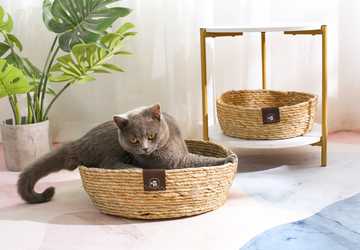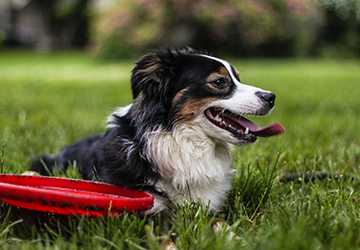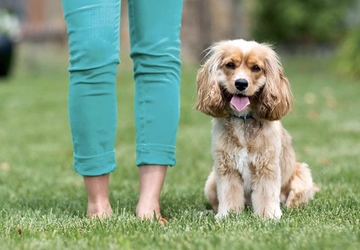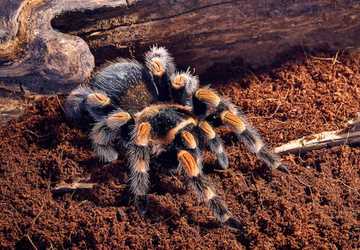Creating a garden can be an exhilarating endeavor; however, if you have pets, additional considerations must be made. By implementing cautious measures, it is possible to maintain the safety and security of all individuals without causing considerable disruption to the environment.
It is crucial to establish a secure environment where young animals can freely investigate and satisfy their natural desire to explore the natural world. By following these tips, you can ensure a safe outdoor environment that is free from risks and provides a secure area for your loved ones, including your beloved pets.
1. Choose Plants Wisely
The majority of domestic animals exhibit an innate inclination to consume plants. This has the potential to not only harm your garden but also put your pet in danger if the plant has any harmful substances. When selecting plants for your garden, it is essential to conduct a thorough examination of their potential danger to your pets.

2. Create a Pet Area
Thoughtful garden planning involves creating separate areas for your pets to engage in activities such as digging, playing, or taking care of their bathroom needs. This way, your outdoor space will remain visually appealing while also satisfying your pets' requirements. Smartly, low hedges have a dual function of creating pathways and keeping pets out of unwanted places.
Some solid and rigid ground covers and border plants can serve as natural obstacles, protecting delicate plants from inquisitive animals.
3. Create a Shelter
Smartly enhance the shade in your garden by introducing either trees or structures like gazebos or pergolas. You may want to include a small pet shelter or designated private areas in your plans so that your pets have a place to seek shelter during rainy conditions or when they desire peace and quiet. In hot weather, it is essential for pets, particularly dogs, to have a shaded spot where they can cool down their body temperature.
4. Create an Engaging Garden
You have the option to incorporate various alluring textures and surfaces, such as decorative grass, to generate a captivating feeling when walking on them. Dogs find immense joy in frolicking on a newly mowed lawn, while cats indulge in sheer pleasure through engaging in actions such as scratching, jumping or playing, and concealing themselves.
Intelligently arrange your garden by establishing distinct pathways and designated areas to direct and oversee your pets' actions. To ensure the safeguarding of delicate plants and avoid any unnecessary disturbance, this action is taken. Pets can easily navigate their surroundings when pathways made from gravel or stepping stones are provided for them. If your garden lacks trees, you can incorporate different sizes of upright logs to provide areas for your cat’s scratching, climbing, and jumping.
5. Choose the Right Type of Mulch
Various types of mulch can pose risks to your pets as they may retain harmful pesticides and promote the growth of mold. Cocoa bean mulch is prone to mold growth and carries hazardous elements which can potentially endanger various kinds of pets. If you are looking for a safer option, most people believe that choosing wood-based mulch is the best choice.
6. Use Organic Pesticides
The existence of poisonous substances in pesticides can put pets in danger. There are, fortunately, good choices available for pets that address worries about letting them roam freely in your outdoor areas. If you have pets, it is essential to avoid using rat, ant, or snail poison in your home. Curious cats and dogs can easily consume these objects and become unwell. Get trustworthy guidance on the most secure household items by consulting the knowledgeable team at your nearby Stodels Garden Centre.
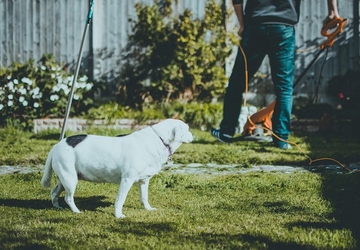
7. Keep the Compost Away
Consuming compost or its runoff can be risky for your pets, as they may find it tempting due to the presence of discarded food and potent odors commonly found in compost heaps. Ensure that you keep compost in a place where pets cannot access it and correctly dispose of any additional water draining away.
8. Clear Harmful Insects
Different types of insects are attracted to plants, including pests like ticks, fleas, and mosquitoes, which can be harmful to your pets. A wise strategy to safeguard your pets from bothersome bugs involves using pesticides sensibly in your outdoor areas and consistently administering flea and tick medication to your furry companions. Mosquito prevention can be achieved through two methods: one is the use of citronella, and the other, in more severe cases, involves strategically placing mosquito nets. Ensuring your pet's vaccinations are up to date is essential as it helps reduce their chances of contracting insect-borne diseases.
9. Protect Your Vegetable Garden
A clever way to keep your pets safe from potentially harmful bites is to familiarize them with your vegetable garden. Some vegetables are suitable for pets to eat, while others should be steered clear of. Pets can be at risk if they ingest excessive amounts of certain substances, and even a small quantity of grapes or raisins can result in serious complications.
A clever approach to keep your pets away from your growing vegetables is to consider elevated beds, window boxes, or hanging baskets as alternative options.
10. Cover Your Pool
Pets are equally at risk as children when they are near swimming pools. Not all pets are skilled in swimming, and even those who are may encounter difficulties in getting out of a pool that is not filled to an appropriate level. Be sure to use an appropriate mesh or secure barrier to safeguard your pool. Thermal or "bubble" covers lack essential safety elements. Undoubtedly, these animals pose a more significant threat as they possess the capability to submerge another creature, greatly hindering its chances of escaping, if not rendering it completely impossible.
In addition, pool covers have the added benefit of minimizing water loss through evaporation and maintaining the cleanliness of the water. Unwanted debris at the bottom will be a thing of the past.
Conclusion
Occasionally, the needs of your pets and the needs of your garden may intersect. Pets can pose a threat to gardens, just as specific objects in gardens can pose a danger to pets. However, by taking a few simple measures we have mentioned above, you can ensure the safety of both your pets and your lawn.






